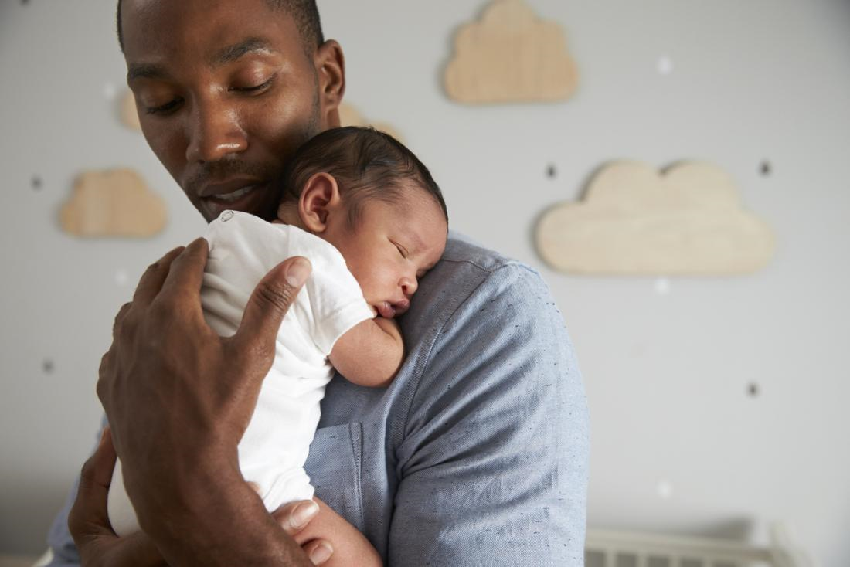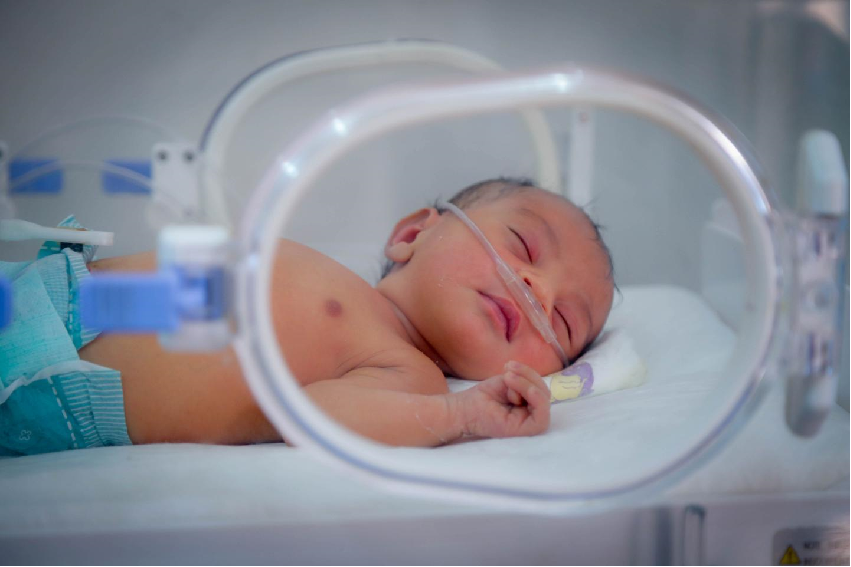
09 Jun What is neonatal pneumonia, its types and what causes
Neonatal pneumonia is the infection of the lung tissue (also called the lower respiratory tract) of the newborn. That is, of a baby less than one-month-old. Although in practice it usually refers to a child less than 7 days old. This infection can be caused by different microorganisms (viruses and bacteria), although bacterial infection is more frequent. The infection can occur within the mother’s womb or after the baby has already been born.
Symptoms of pneumonia in babies include respiratory distress, refusal to feed, and low oxygen levels. In the most severe cases, progression to generalized infection or sepsis which, if not treated early, can be fatal. Early diagnosis and initiation of antibiotic treatment as soon as possible are essential for resolution without sequelae.
Causes of pneumonia in newborn babies

As the newborn’s immune system is very immature, the infection that is initially located in the lung can rapidly progress in a few hours to the rest of the body, giving rise to a generalized infection or sepsis, which has a serious prognosis if it is not established. early antibiotic treatment. Hospital admission is always necessary to establish intravenous treatment and, in the most severe cases, in the neonatal intensive care unit.
The incidence is variable since it depends on the social and health conditions of each country, but it usually affects less than 1% of live newborns. There are risk factors that increase the probability of its appearance. Such as prematurity below 35 weeks, maternal vaginal infection by group B streptococcus, or prolonged rupture of membranes of more than 18 hours.
Pneumonia in babies and COVID-19
On the other hand, after almost 10 months of the SARS-Cov2 pandemic and millions of people affected worldwide, there are still many unknowns about the relationship of the coronavirus with the pediatric population, and even more so in the case of newborn children.
Although isolated cases of COVID-19 infection have been published in babies a few days old, it seems to be a horizontal infection (that is, caused by infection from living relatives), and not a vertical or congenital infection by the transplacental route. Most of the cases evolved favorably, with mild respiratory symptoms in the newborn.
Therefore, there is currently no evidence of a relationship between neonatal pneumonia and coronavirus. An isolated case of COVID-19 infection has been reported in a newborn of a positive mother. But most of them are asymptomatic patients. In fact, even in the case of positive mothers, separation of mother and newborn is not routinely recommended and breastfeeding is not contraindicated.
Types of neonatal pneumonia
Pneumonia in the newborn can be classified into several types depending on the mechanism of transmission of the infection:
Congenital pneumonia
In this case, the newborn is already born with the infection. Which will manifest itself in the first hours of life, or even at the moment of birth, in the form of respiratory distress. In congenital pneumonia, the infection takes place transplacentally, that is, through the placenta. We must remember that the placenta is the organ that filters the maternal blood and distributes it through the baby’s circulatory system. Therefore, the infection is probably not only localized to the lung but has also spread through the bloodstream to other organs. It can be the most serious form of neonatal pneumonia.
Intrauterine pneumonia
In this case, an infection of the amniotic fluid (chorioamnionitis) initially occurs which, being in contact with the fetus in the womb, ends up affecting it. The main risk factor is premature rupture of the amniotic sac. And maternal genital infection by some germs, such as group B streptococcus or some enterobacteria.
Vertical or acquired pneumonia through the birth canal
Unlike in the previous case, the child is not infected inside the uterus. But in transit towards its exit to the outside at the time of delivery. The newborn can inhale certain germs present in the vaginal canal. Staying in the respiratory tract and producing pneumonia a few hours later.
In these three types of pneumonia (congenital, intrauterine, and vertical) the infection is very early. And the symptoms usually begin at the time of birth in the form of respiratory distress, or a few hours later. Early recognition of symptoms is essential to start antibiotic treatment before the infection continues to progress.
Postnatal pneumonia
In this case, the infection is acquired after birth, in the first days of life. It can in turn be due to different causes, but the most common is usually due to germs acquired within the hospital itself. Especially if the child has been admitted to neonatal care for another reason. This type of pneumonia caused by germs in the hospital environment is known as nosocomial pneumonia.
But, in addition, pneumonia can also be acquired by germs present in the community. In the newborn’s cohabitants (mother, father, grandparents…). The main community-acquired pneumonia at these ages is secondary to respiratory syncytial virus infection, responsible for the dreaded bronchiolitis. For all these reasons, the main way to prevent this pneumonia is by limiting visits to newborns. And taking extreme hygiene measures, such as frequent hand cleaning.
You may also be interested in Mother- and child-friendly health establishments



Sorry, the comment form is closed at this time.